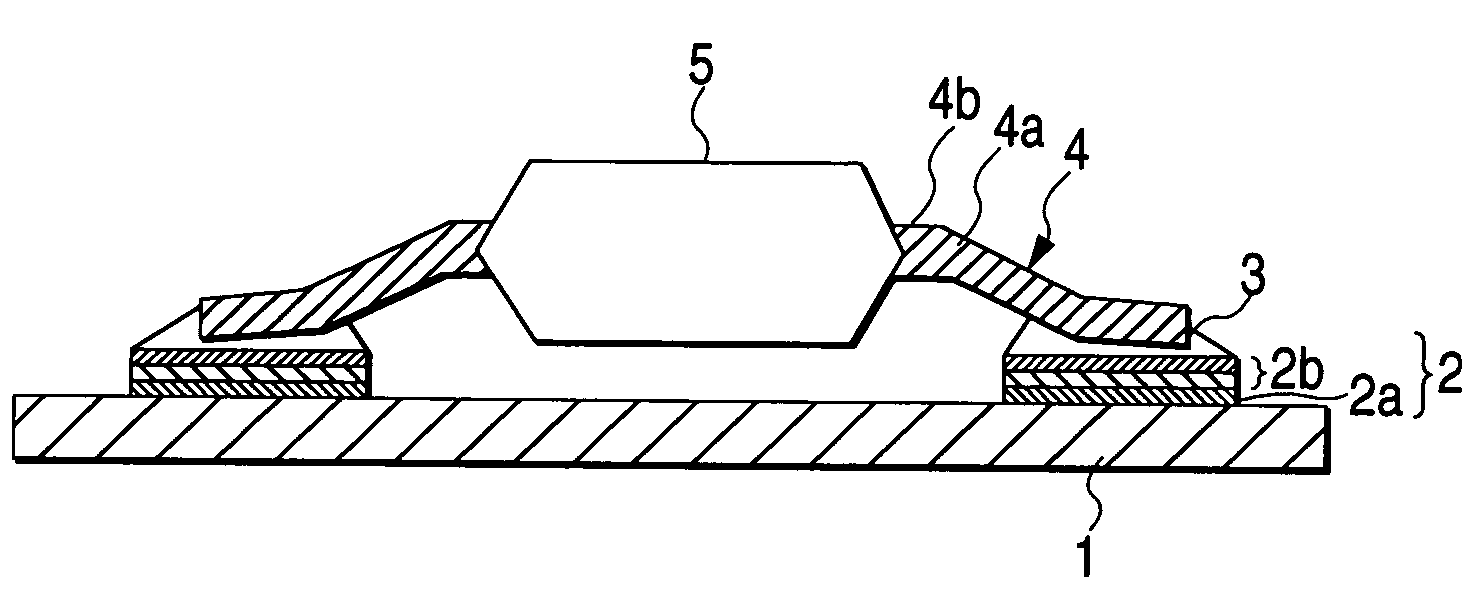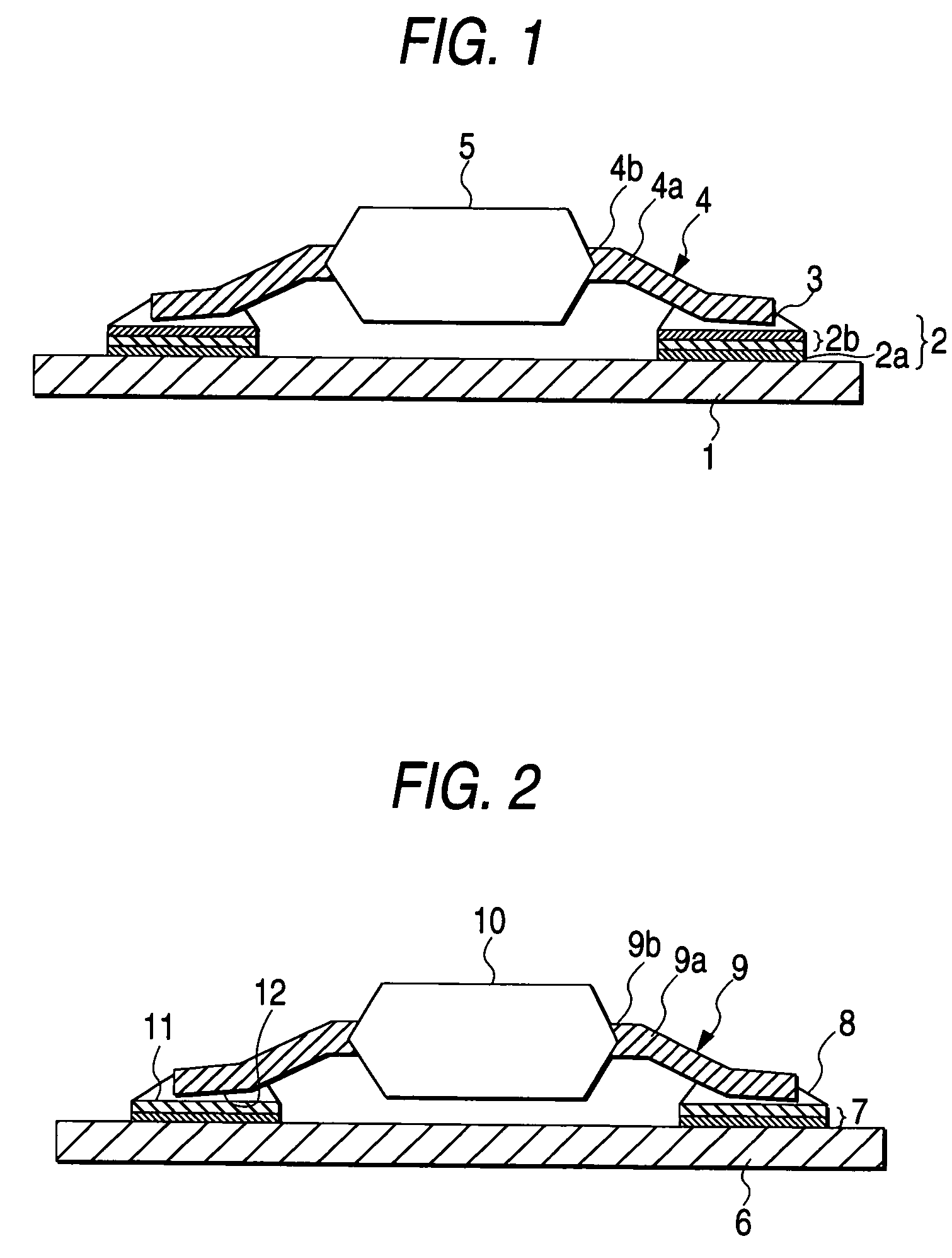Soldering method, component to be joined by the soldering method, and joining structure
a technology of soldering and components, applied in the direction of solventing apparatus, manufacturing tools, transportation and packaging, etc., can solve the problems of phase separation, the effect of thermal fatigue resistance, the effect of preventing the deterioration of the soldering portion and sufficient strength of thermal fatigue resistan
- Summary
- Abstract
- Description
- Claims
- Application Information
AI Technical Summary
Benefits of technology
Problems solved by technology
Method used
Image
Examples
Embodiment Construction
[0043]One mode for execution is hereinafter illustrated through FIG. 1. FIG. 1 is a schematic partial sectional view of an electronic circuit board prepared by the soldering method in this mode for execution.
[0044]First, a board 1 and electronic component 5 to be joined thereto are prepared. A land 2 prepared by covering a parent material 2a comprising Cu with a barrier metal layer 2b comprising a Ni layer and an Au layer is formed on the board 1, and the land 2 can be formed, for example, according to the following method.
[0045]For example, the parent material 2a comprising Cu is formed in one united body with a wiring pattern (not shown in the figure) on the upper surface of the board 1 made of a glass epoxy resin or the like by thermo-compression bonding (or mounting) of copper foil and etching. The wiring pattern can have a width of, for example, about 50 to about 100 μm. Thereafter, a resist is formed in a prescribed region of the surface of the board 1 to cover the wiring patt...
PUM
| Property | Measurement | Unit |
|---|---|---|
| Thickness | aaaaa | aaaaa |
Abstract
Description
Claims
Application Information
 Login to View More
Login to View More - R&D
- Intellectual Property
- Life Sciences
- Materials
- Tech Scout
- Unparalleled Data Quality
- Higher Quality Content
- 60% Fewer Hallucinations
Browse by: Latest US Patents, China's latest patents, Technical Efficacy Thesaurus, Application Domain, Technology Topic, Popular Technical Reports.
© 2025 PatSnap. All rights reserved.Legal|Privacy policy|Modern Slavery Act Transparency Statement|Sitemap|About US| Contact US: help@patsnap.com


